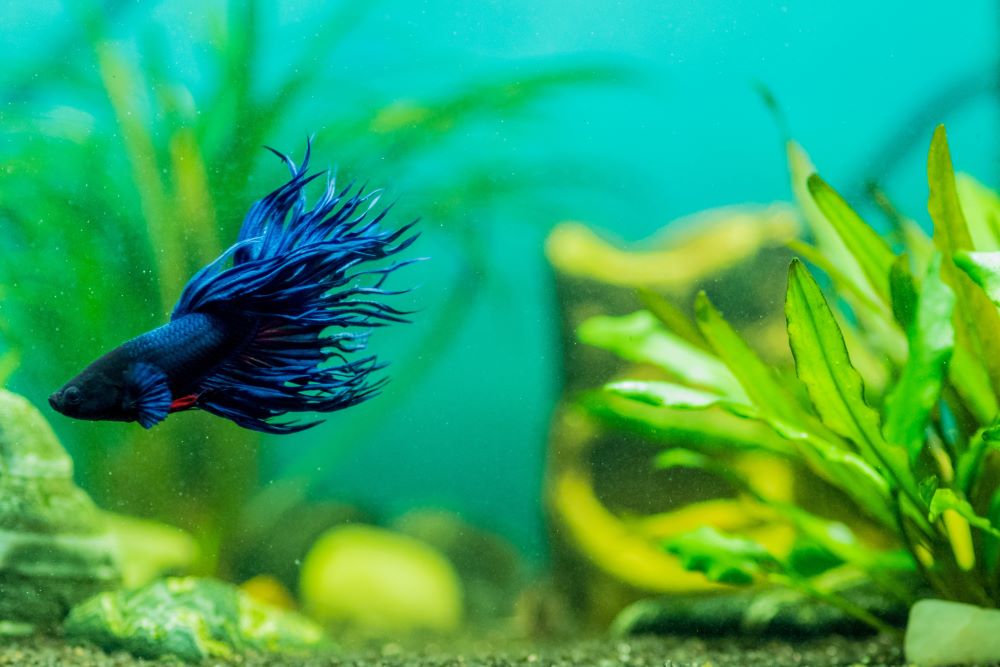Betta fish are among the most sought-after exotic fish species among aquarists. Given their fascinating behaviors, impressive finnage, and the diverse colors and patterns they display across their many species, it’s no surprise. If you’ve decided to start your own betta aquarium, you will find these fish very rewarding to keep as pets.
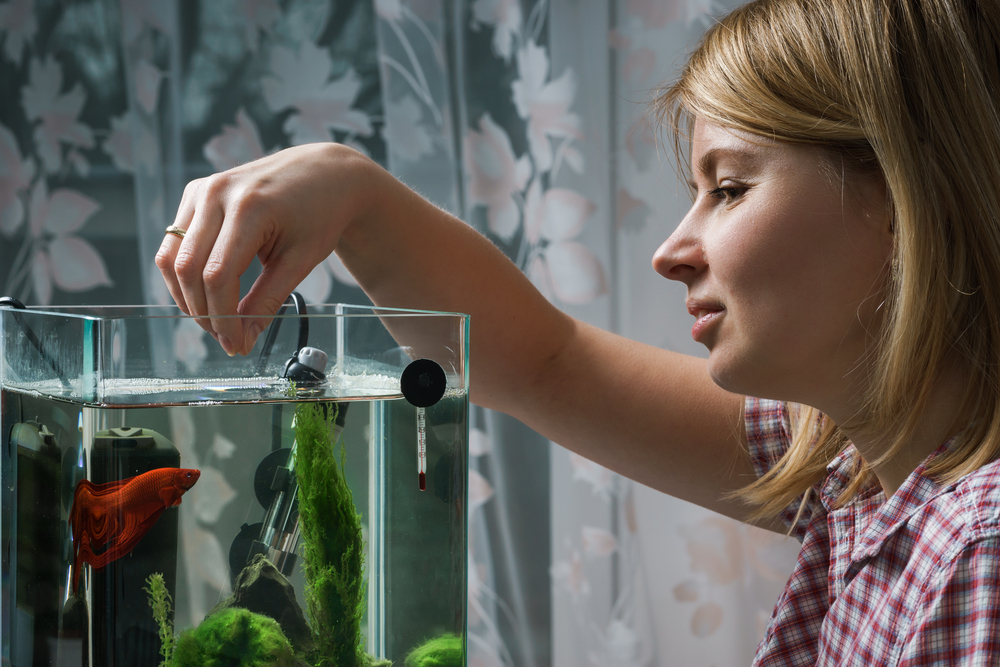
However, as great as keeping exotic species like Betta splendens can be, it is also quite a bit of work. Catering to their needs involves curating a whole set of environmental conditions necessary for their flourishing.
Luckily, this comprehensive guide to betta fish care will provide all the guidance you need to set up your betta aquarium and care for the occupants’ needs. Read on.
Contents
Setting Up Your Betta’s Home
The first and most essential thing you can do for your betta is to set up a home for it. That involves setting up a well-sized aquarium and fitting it with equipment for filtration, water replacement, heating, and lighting.
Check out these other top picks to fully understand your betta buddy needs:
- How Long Can a Betta Fish Go Without Food?
- Can Betta Fish Live in Tap Water?
- Do Betta Fish Hibernate?
Choosing the Right Tank
The aquarium is the first thing to consider since it will contain everything that makes up your betta’s immediate environment. It will need to be quite sizable to fulfill this function effectively.
The minimum volume for a betta aquarium is 5 gallons, although there’s no reason you can’t get something bigger. If the tank is any smaller than 5 gallons, you risk making your betta feel cramped—so no small bowls.
The ideal shape for a betta tank is a rectangle because it offers the most water surface area for air exchange. Since more air gets into the water in a rectangular tank, water changes are less frequently required.
Additionally, the betta’s labyrinth organ can function better in rectangular tank waters. Finally, there’s the glass material. You should choose an aquarium made of either glass or acrylic, as these materials are more durable and scratch-resistant.
Importance of Filtration
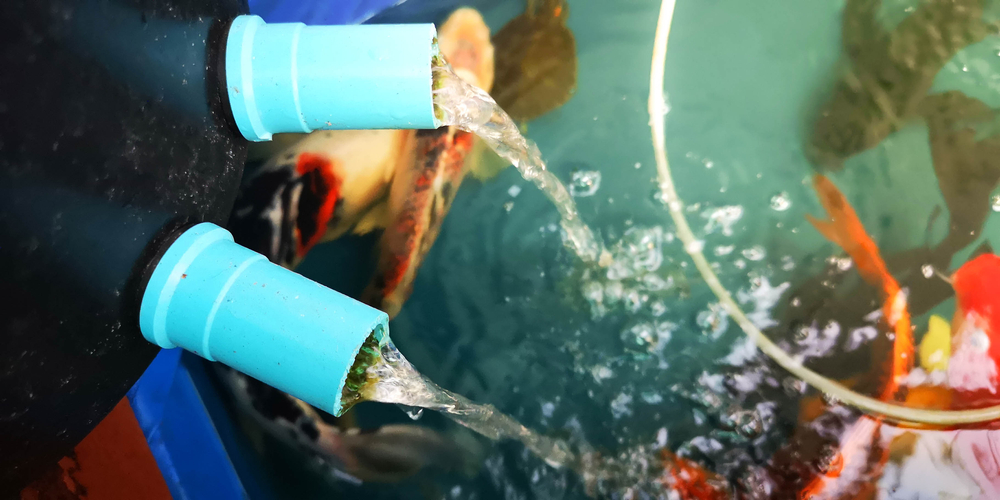
Bettas require clean water to thrive, so a filter is a non-negotiable part of their aquarium setup. Installing one of those is the best way to keep the water free from harmful compounds and substances. For example, there are nitrates, nitrites, and ammonia, all of which should be kept at absolute zero concentration.
Some filters may cause strong currents in the water, so the best ones are those with adjustable flow rates or those that use a filter baffle to reduce the output. The filtration devices should include mechanical, chemical, and biological components for comprehensive water cleaning.
Heating and Lighting
Betta fish in the wild may tend to suffer from periodic wild temperature fluctuations, especially given the effects of global warming. Still, they would be way more comfortable with relatively stable temperatures within the ideal range. As such, the water temperature in your betta aquarium should be kept consistent.
The best way to see to that is a heater, which will make it easier to maintain the the temperature within the ideal range of 76-81°F. The heater should be fully submersible and have a built-in thermostat for easy temperature regulation.
Lighting is also important, especially for making the betta feel more at home. Natural lighting initially makes the most sense, but it may make temperature regulation more difficult—so you can’t rely on that too often.
Soft LED lights are a great alternative, as they can provide the right amount of light to support live plant growth without overheating the water. You need to avoid excessive lighting as it can cause stress and promote unwanted algae growth.
Water Quality and Maintenance
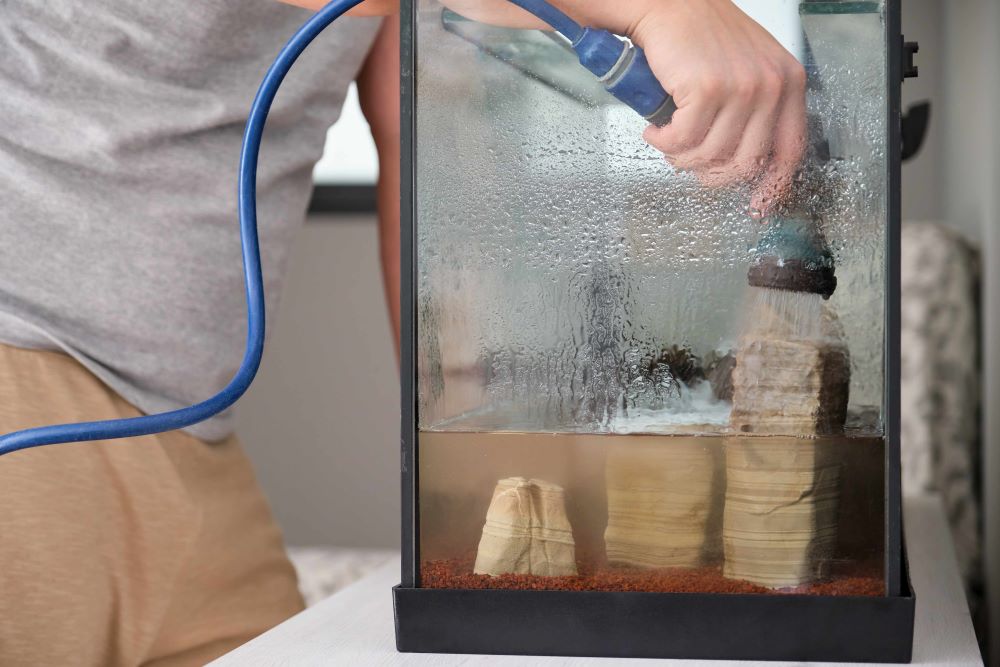
After setting up the tank and the heating and lighting equipment, water is the next thing to consider. Tap water is generally the easiest to get, but it may be hard and contain lots of impurities. So, if you’re using tap water, you need to neutralize all contaminants with distilled water.
However, the best kind of water to use is deionized water, which is free from contaminants and pollutants. What type of water to use is not the only consideration, however. You’ll also need to balance the nitrogen cycle and conduct periodic testing to determine water purity.
Testing Water Parameters
No matter the initial state of your aquarium water, its parameters will change over time. It will become more or less acidic or alkaline, and nitrate, nitrite, and ammonia levels will increase. Accordingly, it becomes necessary to periodically test the water and determine the levels of these relevant parameters.
So, how frequently should you test your betta’s water? The ideal frequency is weekly, and you should monitor pH levels, ammonia, nitrite, and nitrate concentrations.
Depending on the results of such tests, you can take the necessary actions to maintain the pH between 6.5 and 7.5, Ammonia and nitrite at 0 ppm, and nitrates at less than 20 ppm to prevent toxicity (zero, if possible).
| Parameter | Ideal Range | Notes |
|---|---|---|
| pH | 6.5 – 7.5 | Sudden changes can stress bettas. |
| Ammonia | 0 ppm | Toxic even at low levels. |
| Nitrite | 0 ppm | It should be non-detectable. |
| Nitrate | <20 ppm | Keep low with regular water changes. |
Running a Healthy Nitrogen Cycle

You need to establish a nitrogen cycle before introducing your betta to the aquarium. A fully cycled tank will convert harmful ammonia into nitrite and then into less harmful nitrate. The filtration system you installed earlier is relevant here.
If you use one with an adjustable flow, it will keep the water from being too turbulent, as bettas prefer calm waters. The heater is also necessary for the nitrogen cycle. The temperature range between 75 to 80 degrees Fahrenheit is essential not only for the betta but also for the proper functioning of beneficial bacteria in the nitrogen cycle.
Water Change Schedule
A water change eventually becomes necessary to prevent several factors from getting out of control. For example, consider the nitrates, which are part of a functioning nitrogen cycle that helps transform nitrites and ammonia.
The nitrates are generally less harmful than the nitrites and ammonia; however, they can accumulate to problematic concentration levels, which is when a water change becomes necessary. To keep things balanced, you want to maintain a consistent water change schedule, typically 20-25% of the tank water once a week.
This involves siphoning out the water and replacing it with treated tap water or distilled water that has been conditioned to remove chlorine and other harmful chemicals. Regular water changes not only manage nitrate levels but also replenish essential minerals that your betta needs.
Betta Fish Care: Diet and Nutrition
Now that you have the aquarium and water business figured out, diets and feeding schedules are the next thing to arrange. You want to ensure that your betta is regularly and properly fed, and that includes giving it the optimum diet.
Protein-Rich Foods
Betta splendens is a famously carnivorous species that lives heavily on protein. As such, their diet in captivity should consist heavily of the same. The go-to protein foods for betta fish are high-quality pellets and freeze-dried foods. These pellets should list a protein source, such as fish or shrimp, as the primary ingredient.
Freeze-dried bloodworms and brine shrimp supply essential nutrients, but you want to serve them sparingly to prevent nutritional deficiencies. You can also serve live food options, like small insects and larvae, as they simulate the betta’s natural hunting behavior.
Feeding Frequency and Amount
Given the relatively small size of their stomachs, bettas are very prone to overfeeding problems. Since the betta species’ stomach size remains the same, the problem is usually the aquarist, who may not know the right quantities to feed the fish per period of time. So, what should you do?
You should feed your betta small portions, about the size of their eye, once or twice a day. You need to monitor how much they eat within a couple of minutes; leftovers should be removed to maintain tank cleanliness.
On days when your betta is on a fast, especially when recovering from overfeeding, you should abstain from giving them any food to aid their digestion and not complicate matters.
Finally, note that some foods, like flakes, are less ideal for bettas as they can cause bloating and are less nutritionally complete compared to pellets or live food.
Behavior and Social Needs
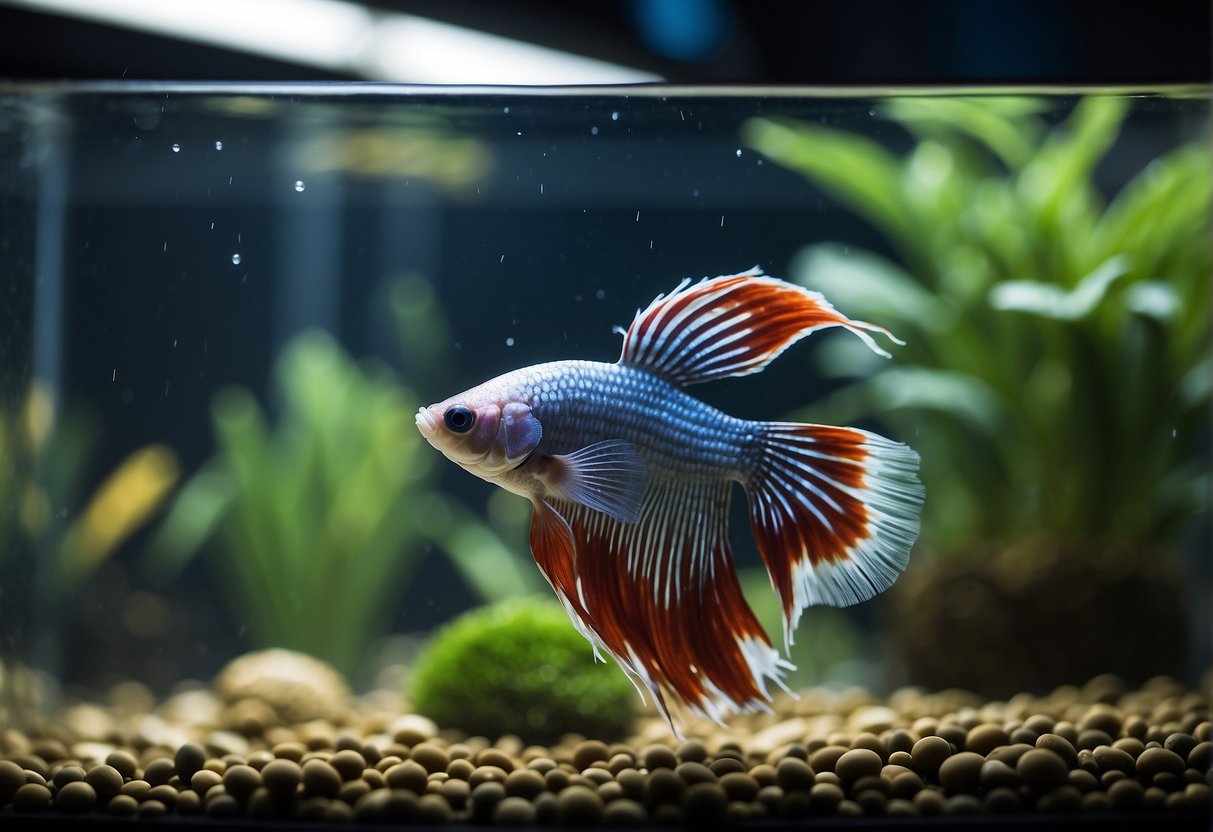
Betta fish have unique personalities and behaviors that you need to understand in order to cater to them successfully. And so, let’s take a moment to discuss these behaviors.
Understanding Betta Behavior
Aggression is a noteworthy trait in male betta fish. The species basically earned the moniker Siamese fighting fish due to the combative tendencies of the males when housed with other males.
This testiness around other males is an evolved social behavior that enables them to defend their mating and feeding territory and their newly spawned offspring from aggressors.
Basically, bettas are fish you want to house separately to avoid conflict. On the flip side, females can coexist more peacefully and can be kept in a group known as a sorority, although this also requires careful management to mitigate the risk of aggression.
Compatible Tank Mates
When considering tank mates for a betta, you have to choose non-aggressive species to prevent any hostility. For instance, corydoras are a suitable option because of their peaceful nature and bottom-dwelling habits. Snails and tetras can also make good companions for a betta fish.
However, the temperament of individual bettas can vary, so you must monitor their behavior closely when adding new tank mates. It’s important to remember that maintaining a peaceful aquarium may require a trial-and-error approach with different species.
Betta Health and Wellness
If you want a vibrant and happy betta gracing your aquarium, then you need to pay close attention to its health and wellness. This means knowing the common diseases that afflict bettas, how to treat them, and how to recognize when your betta is happy or not.
Common Betta Diseases
You need to keep an eye out for symptoms of common ailments that could affect your betta’s well-being. And then consistent monitoring should be backed up by prompt treatment. Here are a few diseases to always be vigilant about:
- Fin Rot: This is a disease that involves a betta’s fins and tail appearing shredded or discolored.
- Ich (White Spot Disease): This disease is manifested in small, white spots on the body and fins of your betta.
- Velvet: If you notice gold or rust-colored dusting across your betta’s body, it certainly has velvet.
If you notice any of these symptoms in your betta, the best step is to call a veterinarian and not attempt to treat it yourself—at least, not unless a vet has given you medication and the right dosage to administer.
Signs Your Betta Is Happy
A happy betta is a spectacle to behold, and that spectacle tends to involve any of the following:
- Bright Colors: When your betta’s color is vibrant, indicating good health and mood.
- Very Active: If you observe high levels of activity as your betta explores its tank with confidence, then it’s happy and healthy.
The Importance of Enrichment
Every veteran aquarist will attest to the importance of enriching your betta’s surroundings. It may seem like minor aesthetics at first, but it goes a long way toward keeping your betta in health and good spirits. So, what enrichments are we talking about here?
Decorations and Plants
In the wild, betta fish inhabit rice paddies, which are replete with plant life and natural decor. You can emulate this natural environment by including live plants such as java fern or anubias, which provide hiding spaces and reduce stress.
Additional decorations like caves or driftwood also serve as excellent enrichment features, giving your betta fish a sense of safety and territory within the substrate.
Creating Stimulating Environments
You want to prioritize establishing a complex, layered environment to create a stimulating environment reminiscent of your betta’s wild habitats. This involves adding varying levels of plant life and decorations that allow for exploration and exercise. Here are some specific steps:
- Substrate: A soft, fine substrate can mimic the bottom of a rice paddy, where betta fish naturally forage. Always use smooth stones to prevent injury to your betta’s delicate fins.
- Space to Roam: Bettas are active swimmers, so ample space is essential. The minimum recommended tank size for this is 5 gallons.
Breeding Betta Fish
You may recall that bettas are generally not very hospitable to intruders in their space. While they manifest this tendency a lot less when the intruder is female, they are still likely to switch their mood and get aggressive.
So, when breeding male and female betta fish, you want to pay close attention. You also want to be meticulous about preparing the environment for them.
Setting Up a Breeding Tank
Setting up a breeding tank for betta fish requires careful planning and execution. Here’s how you can ensure an optimal environment:
- Tank Size: A 10-gallon tank is adequate, providing space for the bettas to display natural behavior.
- Water Conditions: The water must be dechlorinated with a temperature between 78-80°F (25-27°C) and a pH of approximately 7.0.
- Plants and Hiding Spaces: Live plants and hiding spaces create a natural setting and relieve stress for the breeding pair.
- Filtration: A sponge filter is recommended as it provides gentle filtration without strong currents that can destroy the bubble nest.
For a successful setup, separate tanks should be ready for the male and female before you introduce them into the breeding tank. Then, monitor water conditions meticulously. Once the breeding tank is prepared, you can introduce the male betta fish first to allow him to establish territory and start creating a bubble nest, which is essential for the breeding process.
Understanding Betta Breeding Behavior
Understanding the breeding behavior of betta fish is crucial in the breeding process. If you can recognize these behaviors, you can tell when something else is happening, and separation may be necessary. Here are the key mating behaviors bettas exhibit:
- Bubble Nest Building: The male creates a bubble nest to house and protect the eggs. This behavior indicates the readiness to breed.
- Courtship Displays: The flamboyant courtship ritual involves the male flaring his gills and fins to attract the female.
- Spawning Process: Once the female is ready, she’ll approach the bubble nest, and the male will wrap his body around hers to fertilize the eggs as they are released.
After spawning, the female should be removed from the breeding tank to prevent potential aggression from the male. The male will then tend to the eggs, ensuring they are secure in the bubble nest.
As a carnivore, the male betta requires a high-protein diet during breeding, but care must be taken to avoid overfeeding and fouling the water. Post-spawning, the male continues his duty, guarding the nest and maintaining the eggs until they hatch.
Conclusion
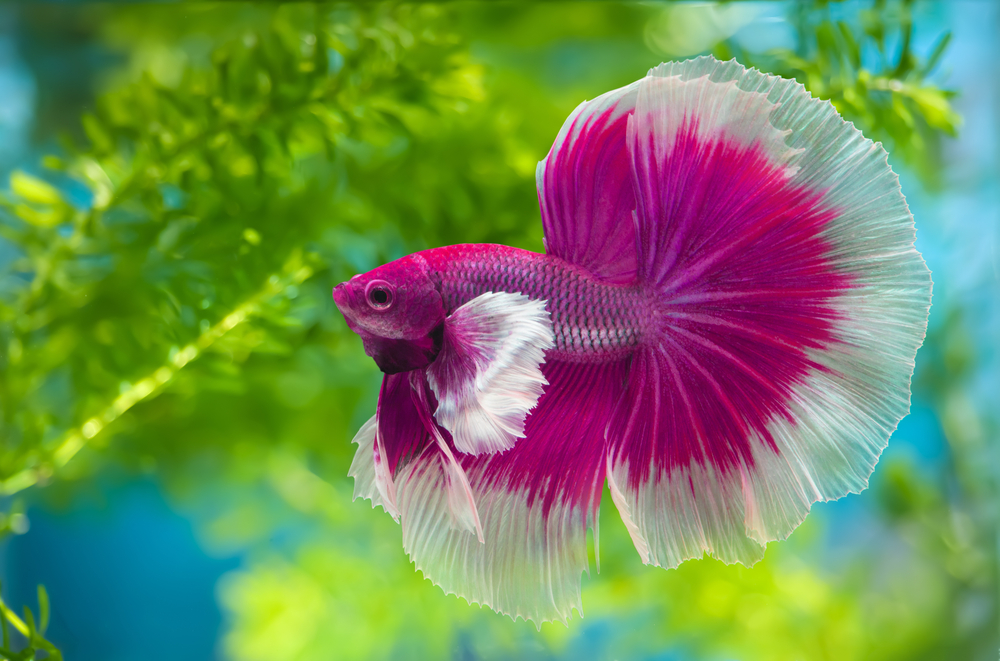
Bettas are one of the most beautiful fish to add to your aquarium. However, like other marine life, they require great care to guarantee their survival. Regardless, with a bit of planning and the right setup, you can create a thriving underwater home for your betta fish.
By following these essential care tips – from maintaining warm water to providing a stimulating environment – you’ll ensure your betta lives a long and colorful life in its beautiful aquarium.
Frequently Asked Questions
Many key questions frequently arise from new betta aquarists and some more experienced ones. This section will address those to help you provide a healthy and vibrant life for your aquatic pets.
What is the ideal tank setup for a betta fish?
Betta fish thrive in a tank that has at least 3 gallons of water, equipped with a heater to maintain a temperature between 78-80 degrees Fahrenheit and a filter to keep the water clean. A gentle substrate and decorations can provide hiding places that make the environment more stimulating for them.
How often should I clean my betta fish’s tank?
To ensure a healthy ecosystem, partial water changes should be performed weekly. Complete water changes, which can be stressful for the fish, should be performed only every few weeks and only when necessary. Regular monitoring of water parameters can help determine the cleanliness of the tank.
What type of food is best for a betta fish’s diet?
Betta fish are primarily carnivorous and require a diet rich in protein. You can meet that requirement by feeding them high-quality betta pellets or freeze-dried bloodworms as a staple, along with the occasional treat of live or frozen brine shrimp to ensure optimal health and coloration.
What are the signs of a healthy betta fish?
A healthy betta fish displays vibrant colors, active swimming behavior, and a good appetite. Their fins should be free from tears or discoloration, and their eyes should be clear. Regular observation helps to notice any changes that could indicate health issues quickly.
Can betta fish cohabitate with other species in the same tank?
While bettas are known for their territorial nature, certain species can coexist with them. Non-aggressive, similar-sized fish like Amano shrimp can be suitable tank mates, as they are not likely to trigger the betta’s aggression.
How can I identify and treat common diseases in betta fish?
Signs of illness in betta fish include lethargy, loss of appetite, clamped fins, and unusual spots or discolorations on the body. Early identification is crucial.

Ian Sterling, founder of Fishlab.com, began his aquarium journey over 30 years ago, driven by a deep fascination for fish and their diverse personalities. His website, Fishlab.com, is dedicated to making fishkeeping accessible and enjoyable, offering beginner-friendly guidance, expert insights, and a community for aquarists to connect and share experiences.


